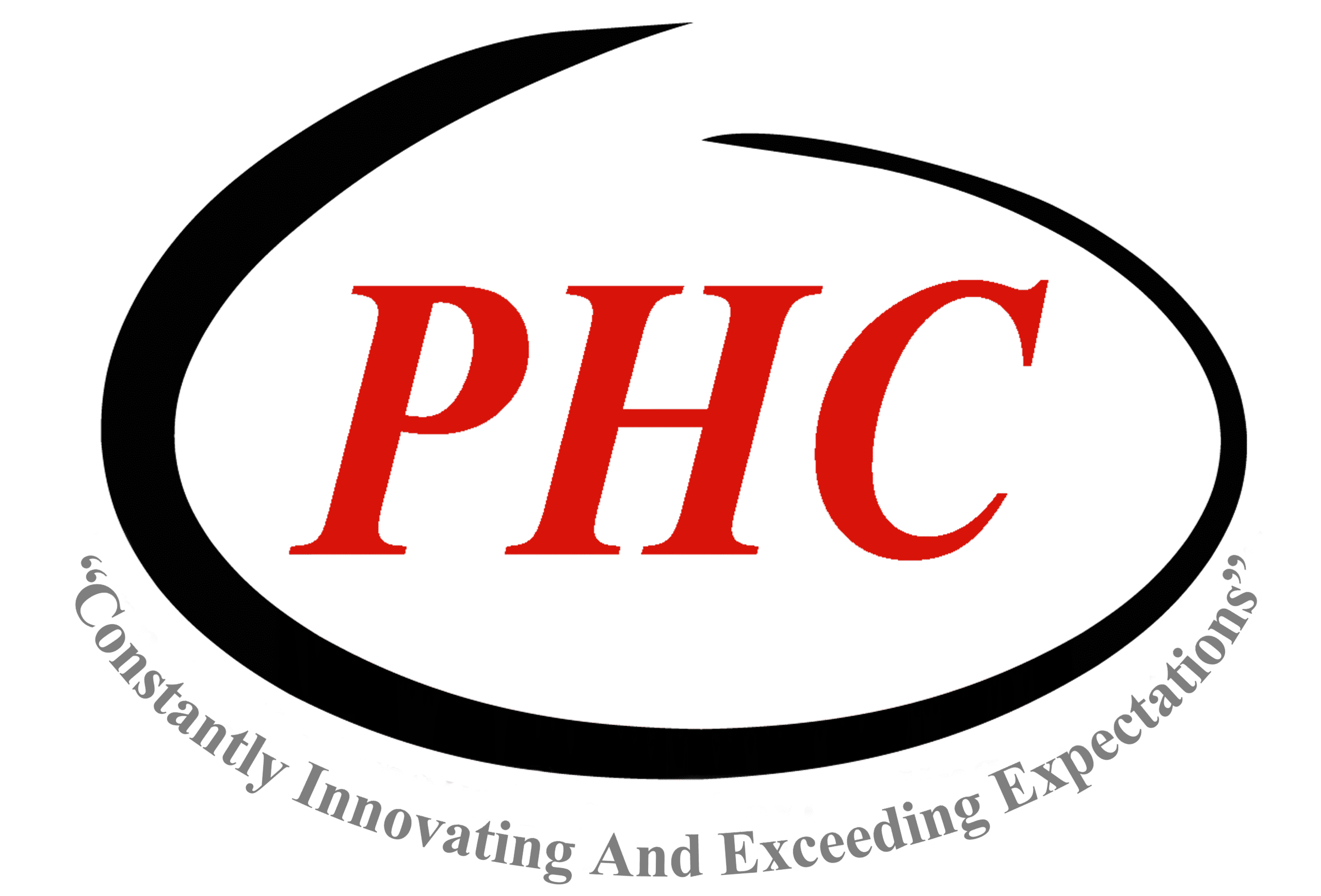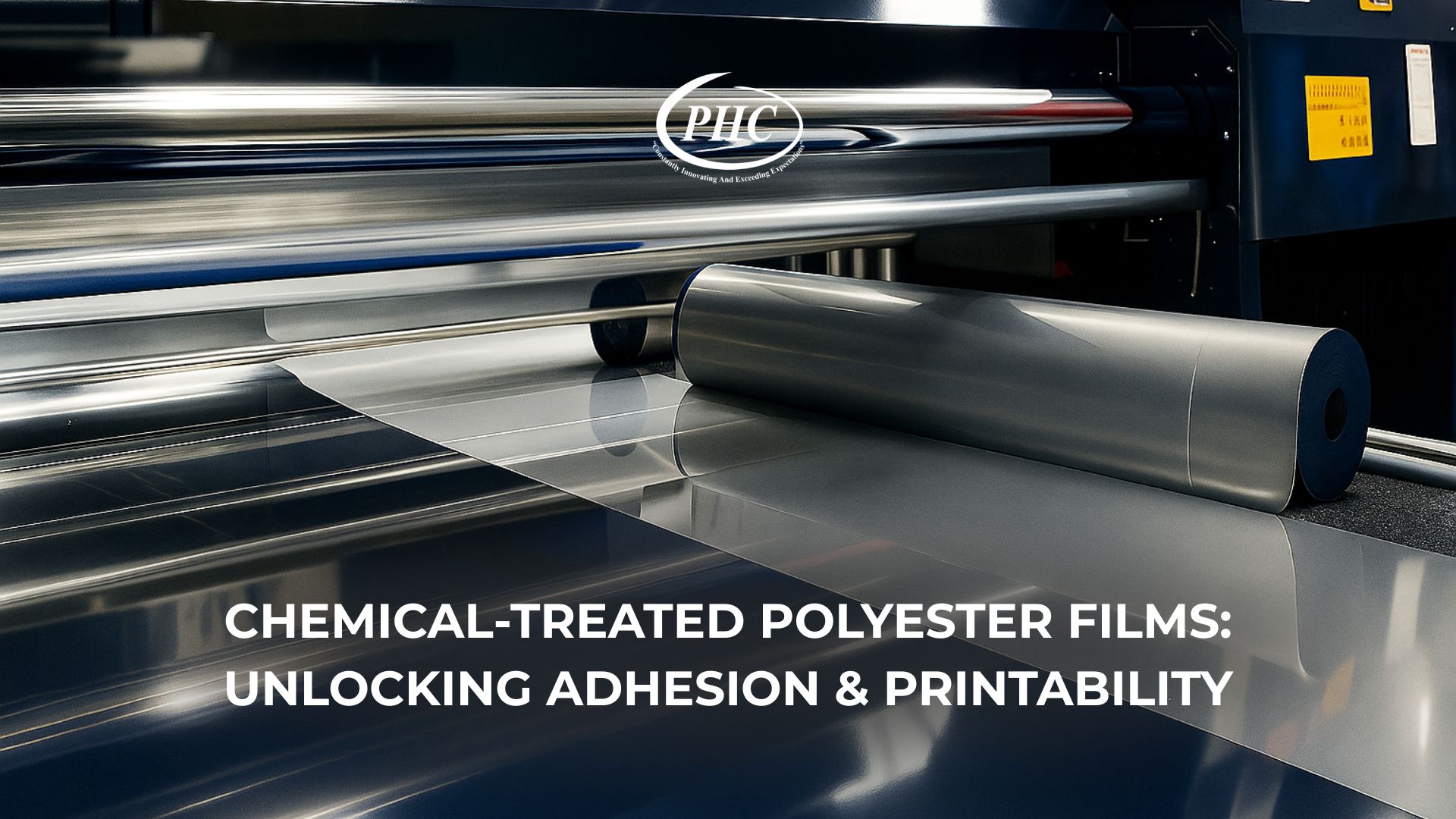In today’s performance-driven materials world, the phrase “surface matters” couldn’t be more true. Whether you’re printing high-definition graphics, laminating protective coatings, or applying industrial adhesives, surface energy and chemical compatibility define the success of every process.
That’s where chemical-treated polyester films come in — advanced PET films engineered to deliver superior adhesion, printability, and durability across a wide range of industries.
At Pilcher Hamilton Company (PHC), headquartered at 850 South Buncombe Road in Greer, South Carolina, we’ve spent more than a century perfecting the art and science of polyester film technology. From corona-treated to chemically modified surfaces, our portfolio includes coatings that help inks, adhesives, and laminates perform better — because in packaging, electronics, or automotive applications, reliable adhesion isn’t optional; it’s essential.
If you’ve ever searched for “polyester near me”, chances are you’ve come across Pilcher Hamilton — a trusted U.S. converter, supplier, and innovator in specialty polyester films. This article explores how chemical treatments transform PET surfaces, what benefits they bring, where they’re used, and how PHC’s local expertise ensures you get consistent quality, every time.
How Chemical Treatments Modify PET Surfaces
1. The Challenge of Untreated Polyester
Polyethylene terephthalate (PET) is naturally strong, clear, and dimensionally stable — but it’s also chemically inert. Its low surface energy (typically ~42 dynes/cm) makes it difficult for coatings, inks, and adhesives to wet or bond properly. Without surface modification, PET films can suffer from:
- Poor ink adhesion and print smearing
- Delamination in laminates
- Limited coating compatibility
- Reduced performance under heat or humidity
To overcome this, manufacturers apply surface treatments that increase surface energy and introduce reactive functional groups. While corona treatment is a common physical method, chemical treatment offers long-lasting and highly specific surface chemistry that endures even after storage, handling, or high-temperature processing.
2. The Science Behind Chemical Treatment
Chemical-treated polyester films are produced by applying a thin, uniform coating or etching layer that modifies the polymer surface at a molecular level. The goal is to create a stable, high-energy interface that attracts inks, adhesives, and coatings.
Typical methods include:
- Aqueous oxidation or acid etching: Removes low-energy contaminants and introduces polar groups (e.g., hydroxyl or carboxyl).
- Silane or acrylic functional coatings: Deposits chemical layers that interact directly with resins, primers, or inks.
- Hybrid chemical primers: Combine adhesion promotion with moisture or abrasion resistance for tough environments.
These treatments produce a chemically active surface that doesn’t revert over time — unlike corona-treated films, which can “age out” as surface energy decays. The result is a film that’s permanently ready for bonding, printing, or coating.
3. Controlled Surface Energy & Adhesion Design
Each PHC chemical-treated PET film is engineered to achieve a specific dyne level and adhesion profile. Depending on downstream use, films can be tailored for:
- Water-based inks and coatings (high surface polarity)
- Solvent-based inks (enhanced wetting stability)
- Adhesive lamination to metals, foils, or plastics
- Silicone, acrylic, or urethane coatings
This precision allows PHC to deliver chemically compatible films that integrate seamlessly with your coating line, lamination process, or print workflow — reducing downtime and improving yield.
Learn more about PHC’s Chemical-Treated Film Product Page for material specs and availability.
Advantages: Enhanced Adhesion, Printability & Durability
The combination of chemical bonding and surface activation provides a long list of advantages over untreated or corona-only PET. Let’s explore why chemical-treated polyester films are becoming a preferred solution across high-performance markets.
1. Enhanced Adhesion
The primary advantage of chemical-treated PET is its superior adhesion performance with a broad range of materials. Adhesives, inks, coatings, and laminates bond uniformly without primers or multiple surface passes.
Benefits include:
- Strong adhesion to metallic coatings, inks, and adhesive layers
- Stable bond strength even under thermal cycling or humidity
- Reduced risk of delamination or peel failure
- Compatible with heat-seal and co-extrusion processes
For converters and printers, this means fewer rejects, cleaner runs, and consistent quality from roll to roll.
2. Improved Printability
Chemical-treated PET films offer exceptional ink wet-out and hold-out for flexographic, gravure, and digital printing. Whether printing intricate graphics or functional layers (such as conductive inks), these films ensure:
- High-resolution graphics with minimal dot gain
- Strong ink adhesion without post-treatments
- Faster drying times and reduced solvent use
- Excellent color vibrancy and scratch resistance
For branding, labeling, and industrial marking, chemical-treated PET provides the smooth, high-energy canvas modern printing technologies demand.
Explore PHC’s complementary Coating Services for over-lamination, priming, or barrier enhancement.
3. Durability and Environmental Resistance
Unlike purely physical treatments, chemically modified surfaces retain their functionality even after extended exposure to temperature, humidity, or mechanical stress. This long-term stability ensures:
- Consistent adhesion after months of storage
- Resistance to chemical attack and UV degradation
- Compatibility with sterilization and heat lamination
- Dimensional stability for tight-tolerance applications
This durability makes chemical-treated PET suitable not only for decorative and packaging uses but also for industrial, automotive, and electronics applications where conditions can be extreme.
4. Compatibility with Downstream Processes
Chemical treatment enhances compatibility with other surface modification techniques such as corona, plasma, or primer coating. In hybrid constructions, a chemical treatment may serve as the anchor coat, improving interlayer bonding between dissimilar materials — for instance, in:
- Laminated PET/metal foils
- Adhesive transfer films
- Flexible circuits
- Protective graphics
Learn more about these hybrid approaches on PHC’s Corona Treating page.
5. Cost and Efficiency Benefits
Because chemical-treated PET films come ready for adhesion, they eliminate steps like manual priming or double corona treatment. Benefits include:
- Lower energy costs and shorter production cycles
- Reduced chemical waste from on-line priming
- Improved line speed and throughput
- Consistent quality reducing material scrap
For converters under pressure to deliver faster without sacrificing quality, chemical-treated polyester films can significantly improve production efficiency and profitability.
Cross-Industry Applications of Treated PET
Chemical-treated PET films are among the most versatile substrates in the polymer industry. Their balance of adhesion, printability, and durability allows them to bridge multiple markets.
1. Packaging and Labels
In flexible packaging, adhesion reliability and visual clarity are critical. Chemical-treated PET excels as:
- Print substrates for pouches, wrappers, and labels
- Lamination films for high-barrier structures (PET/PE, PET/BON, PET/foil)
- Sealant carriers for heat-sealable coatings or adhesives
The surface chemistry ensures inks and adhesives stay intact through forming, filling, and sealing processes, resulting in packaging that looks sharp and performs under stress.
2. Automotive & Transportation
In the automotive sector, chemical-treated polyester films are used in:
- Dashboard graphics and interior trim overlays
- Protective and decorative laminates
- Sensor films and display optics
- Under-hood insulation barriers
These films maintain adhesion and print clarity even when exposed to UV, oils, and heat cycles. Their dimensional stability ensures precise fit in automotive assemblies.
3. Electronics & Electrical Devices
PET’s electrical insulation and thermal stability make it ideal for electronic applications. Chemical-treated variants improve adhesion with conductive inks, adhesives, and dielectrics, enabling:
- Flexible circuits and printed electronics
- Capacitor and battery insulation
- Display and touchscreen films
- Solar backsheet laminations
By ensuring clean, permanent bonds with metallic or polymeric layers, chemically treated PET underpins the reliability of advanced electronics manufacturing.
4. Industrial & Technical Applications
Beyond packaging and electronics, chemical-treated PET finds use in:
- Adhesive tapes and release liners
- Protective overlays for graphics and safety labels
- Lamination films for metals and composites
- Die-cut gaskets and industrial components
Its mechanical strength, chemical resistance, and adhesion control make it a go-to material for engineers and designers developing durable industrial products.
5. Sustainability and Recyclable Design
As sustainability becomes central to packaging and materials design, chemical-treated PET plays an important role. By enabling strong adhesion with water-based inks and solvent-free adhesives, it supports:
- Low-VOC production processes
- Recyclable film structures
- Light-weight laminations that use less material
When combined with post-consumer recycled (PCR) PET, chemical treatments preserve performance while reducing environmental impact — a key focus area for PHC and its partners.
Partner with PHC in Greer SC for Specialty Films
When choosing a supplier for chemical-treated polyester films, experience, precision, and local support make all the difference. That’s why converters, printers, and manufacturers nationwide turn to Pilcher Hamilton Company for their film solutions.
1. Local Expertise and Century-Long Legacy
Operating since 1904, PHC has evolved from a merchant supplier to a full-service converter and innovation partner.
Located in Greer, South Carolina, PHC serves clients across the Southeast and nationwide with a commitment to technical excellence and personal service.
If you’re searching for “polyester near me”, PHC offers more than just local availability — we offer a deep understanding of film chemistry, coating technology, and industrial requirements that helps you get it right the first time.
2. Comprehensive Capabilities
PHC provides a complete suite of film conversion and value-added services, including:
- Custom coating and surface treatment
- Slitting, winding, and die-cutting
- Printing and color applications
- Lamination and adhesive integration
These capabilities allow PHC to deliver ready-to-use films tailored to each customer’s application. Learn more about our range of offerings on the All Products page.
3. Customization and Process Support
Our team works hand-in-hand with your engineers to optimize:
- Surface energy for specific inks or adhesives
- Coating thickness and uniformity
- Heat resistance and chemical compatibility
- Film gauge and tensile strength
Every roll is tested for adhesion, dyne level, and optical clarity — ensuring you get consistent performance batch after batch.
4. Quick Turnaround & Local Availability
With a strategic location in Greer, SC, PHC offers rapid turnaround and regional distribution throughout the Southeast. Local stocking and in-house processing mean:
- Faster lead times
- Lower shipping costs
- Smaller minimum orders
- Direct technical support
For many clients, that proximity is a game-changer — especially for urgent projects or prototype runs requiring specialty treated films.
5. Innovation for Tomorrow’s Markets
PHC is constantly investing in new coating technologies to support emerging needs in:
- Printable electronics and conductive films
- Optical and display applications
- Recyclable and bi-based PET laminates
- High-temperature and chemical-resistant films
By combining traditional expertise with modern materials science, we help customers innovate confidently for the next generation of products.
Surface Science That Delivers Results
Chemical-treated polyester films represent a critical advancement in the evolution of PET materials — bridging the gap between mechanical performance and surface functionality. By modifying the polymer surface at a molecular level, these films unlock:
- Reliable adhesion to inks, adhesives, and coatings
- Consistent print quality and color fidelity
- Long-term durability and environmental stability
- Compatibility with sustainable and efficient processes
From automotive components and flexible electronics to food packaging and industrial laminations, chemical-treated PET films enable designers and engineers to achieve more — with less.
At Pilcher Hamilton Company, we don’t just supply films — we partner with our clients to solve surface challenges through chem
istries that perform. Backed by over a century of expertise, advanced coating technology, and a dedicated team right here in Greer, South Carolina, PHC is your trusted source for specialty films that stick, print, and protect better than ever before.
📍 Visit Us:
Pilcher Hamilton Company
850 South Buncombe Road
Greer, SC 29650
Contact Us

